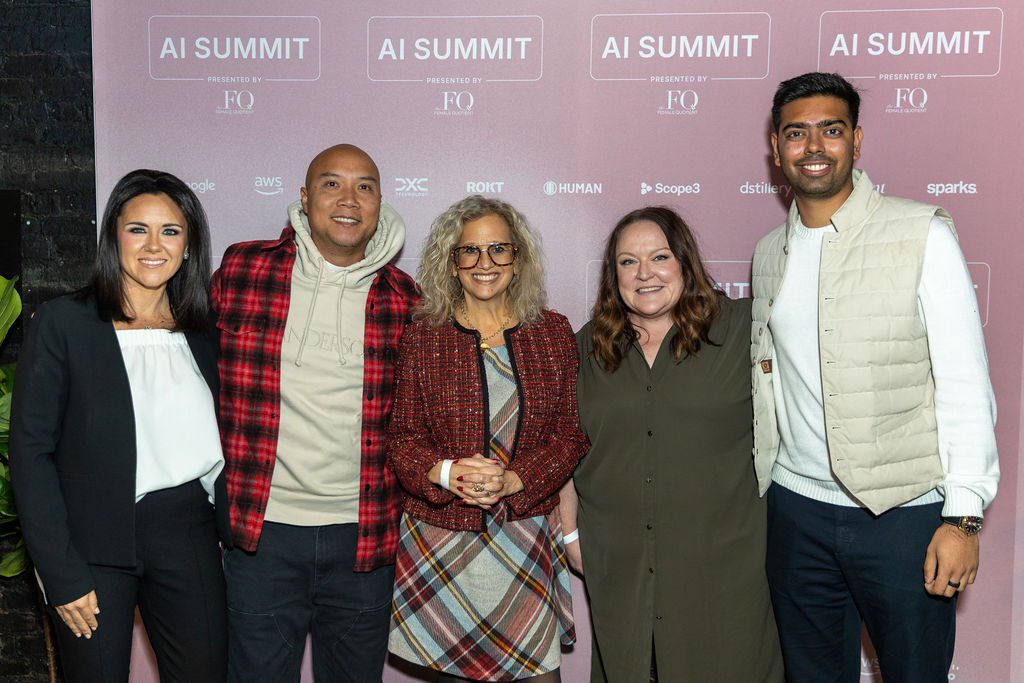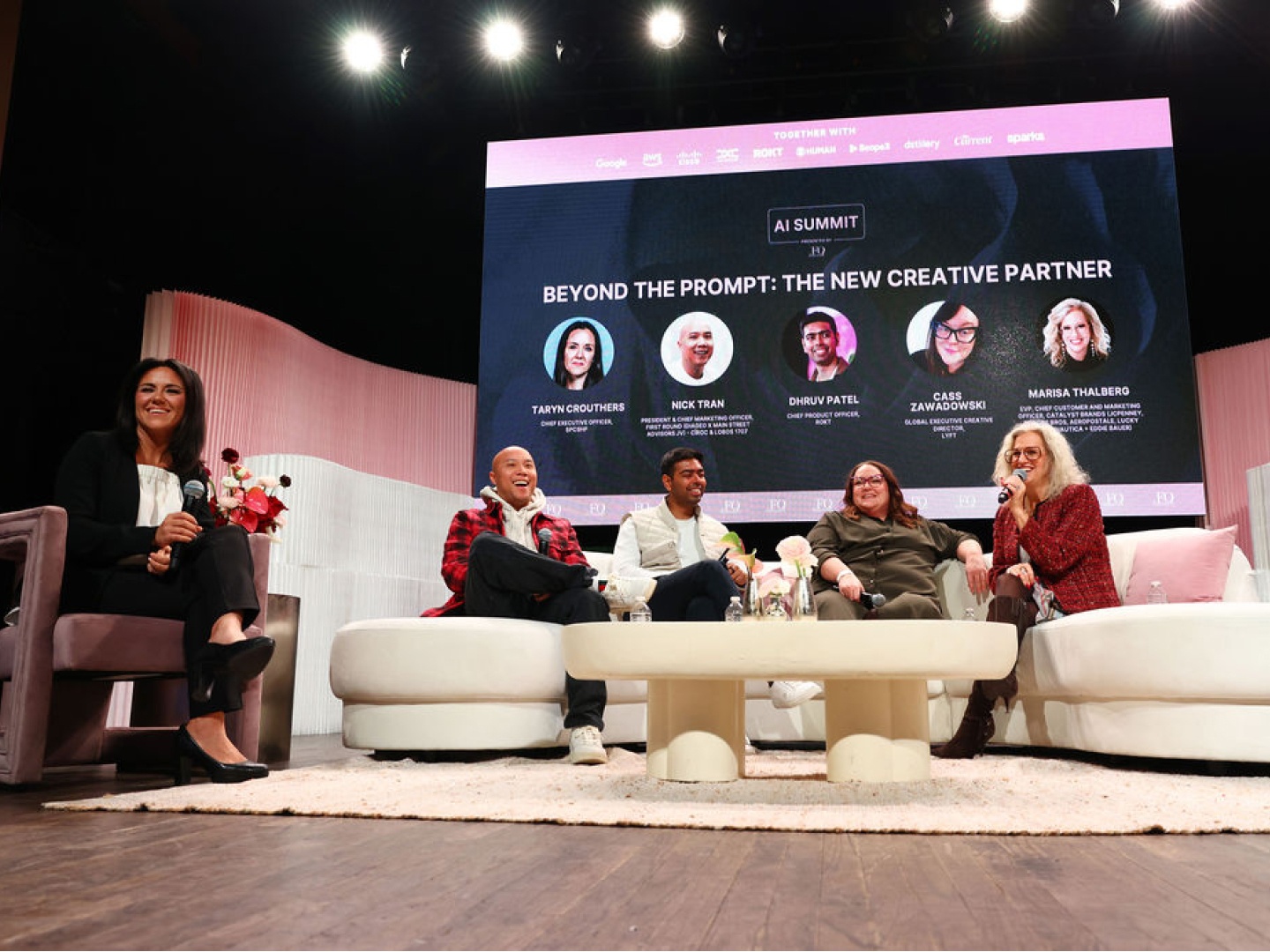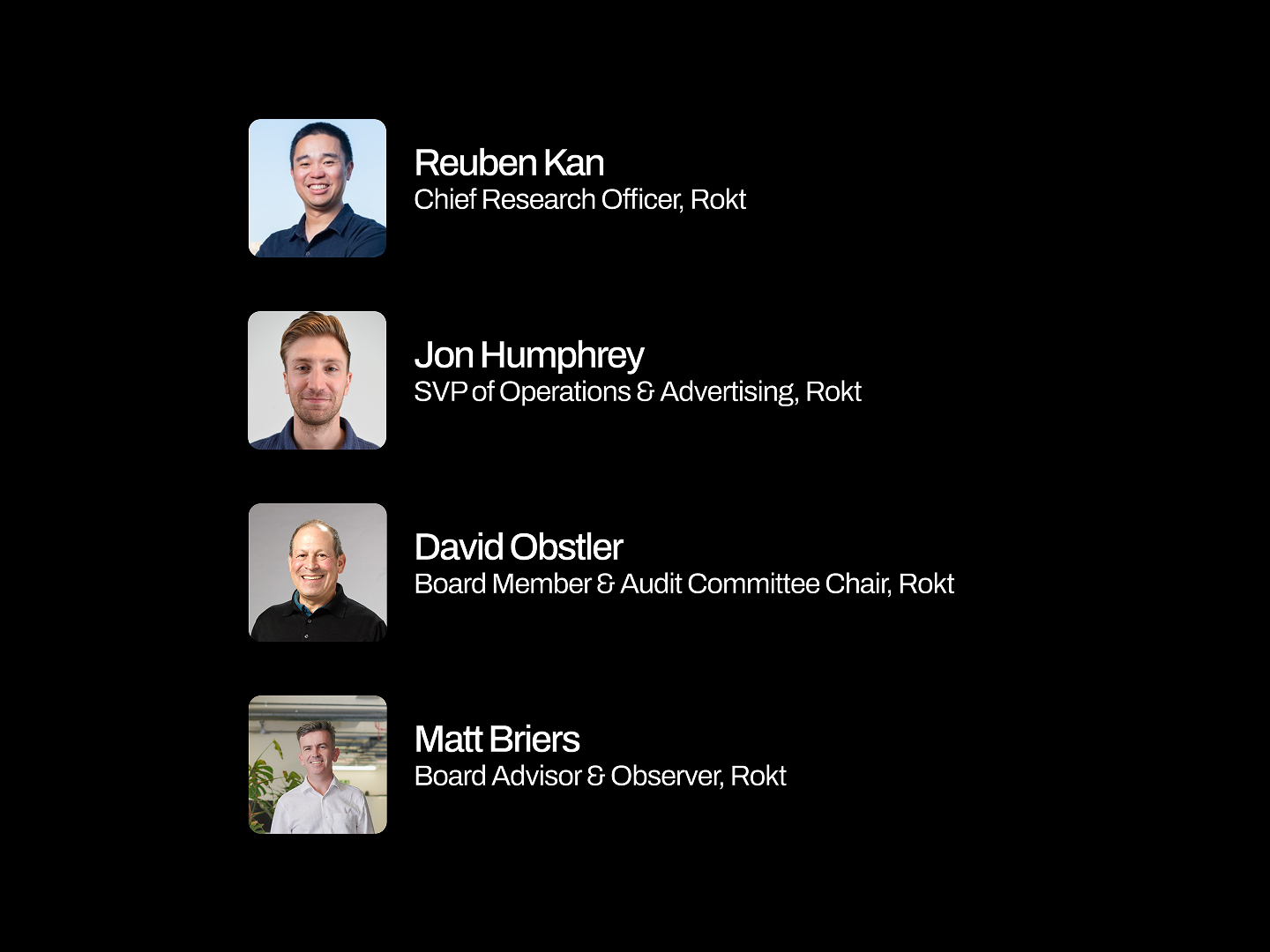Insights from the Female Quotient AI Summit in NYC
At the Female Quotient AI Summit in New York City, a panel of brand leaders came together to explore a critical question facing marketers today: How do we move beyond AI experimentation and turn it into a creative growth engine?
Moderated by Taryn Crouthers, the conversation featured Dhruv Patel, Chief Product Officer at Rokt; Cass Zawadowski, Executive Creative Director at Lyft; Marissa Thalberg, EVP and Chief Customer and Marketing Officer at Catalyst Brands; and Nick Tran, President and CMO at First Round and advisor to Diageo, Main Street Advisors, and Lobos. Together, they unpacked where human intuition meets AI acceleration, and how that convergence is reshaping the future of creative workflows.
Moving from tool to partner
Each panelist shared a distinct moment when AI shifted from being a novelty to a core collaborator.
For Dhruv Patel, that moment came when he used AI to write code after years away from engineering. “There was a real unlock when I realized how much tangible output could come from even quick experimentation,” he said. “Now, I can’t imagine not using these tools to execute my work.”
Nick Tran’s lightbulb moment came from a game with his kids: “We’d try to replicate hotel paintings using AI prompts. It showed me how wildly different outputs could be from the same input, if you’re willing to push it. That shifted how I saw AI: not as a tool to get answers, but as a partner in imagination.”
Marissa Thalberg described her early adoption of AI in side projects, such as brainstorming podcast episode formats and structuring ideas. “I started thinking of AI as my little brainstorming partner. Available anytime,” she said. “But it still comes down to judgment. The output is only as strong as the human input shaping it.”
Operational velocity meets creative clarity
AI’s role in accelerating execution was a major theme throughout the conversation. Tran described how his teams previously compressed campaign timelines from two months to 72 hours, and now see a path to producing brand activations in just 24.
“We mapped out every step in the campaign process and started crossing off anything that wasn’t essential,” he explained. “Now, with AI in the mix, we can go even faster. What used to take weeks can happen in a day.”
But speed alone isn’t the goal. “Pace with purpose” was the refrain, originally coined by Cass Zawadowski, who emphasized that AI enables more inclusive collaboration, earlier in the process.
“We're not waiting for perfection before bringing people in,” she said. “Now we can go to product teams or the CEO with early thinking, supported by fast-turn creative. That’s opening up more feedback loops, and ultimately better work.”
Scaling creativity with precision
At Rokt, Patel highlighted a major unlock: using synthetic personas to simulate customer behavior. “You don’t need a mountain of historical data to start testing,” he noted. “We’re seeing 70–80% of the output we’d get from large-scale data by working with directional personas instead.”
This approach enables faster, more agile iterations, especially valuable when optimizing recommendations or messaging in the Transaction Moment™. “You’re not trying to predict every outcome,” he said. “You’re trying to respond with relevance, in real time.”
Thalberg shared a similar focus on practical application. With multiple retail brands and thousands of SKUs, her teams are exploring how AI can streamline creative production without compromising accuracy.
Connecting AI to brand purpose
While each panelist brought different use cases to the table, all agreed that AI should serve, not overshadow, brand purpose.
Zawadowski shared how Lyft applied this thinking to product design. “We just launched a driver AI assistant that helps drivers personalize their routes based on goals, schedule, and preferences,” she said. “The AI does the serving. The human connection? That’s still ours to own.”
For Thalberg, the focus is on outcomes, not hype. “AI isn’t the goal. Better is the goal,” she said. “Start by defining what 'better' looks like for your business. Then ask how AI can help you get there, whether that’s creative scale, faster insights, or more nuanced messaging.”
Where to start: four takeaways from the stage
To close the session, each speaker offered one piece of advice for marketers looking to take their first or next step with AI:
- Nick Tran: “Use AI to reach creative territory you wouldn’t otherwise access. Push past the obvious. Let it stretch your thinking—and then go even further.”
- Dhruv Patel: “Let AI do the heavy lifting when it comes to spatial reasoning. Use it to synthesize signals, audit performance, and unlock smarter campaign design.”
- Cass Zawadowski: “Anchor your AI applications in brand purpose. Don’t bolt on tools, build around your mission.”
- Marissa Thalberg: “Don’t chase the shiny thing. Stay focused on business outcomes. AI is just the accelerant.”
Throughout the conversation, the most consistent thread was curiosity and a willingness to experiment. As AI matures, the opportunity isn’t just to automate what we already do, but to reimagine what’s possible. For marketers ready to unlock real-time relevance and creative velocity, the most powerful ideas might only be a few prompts away.










